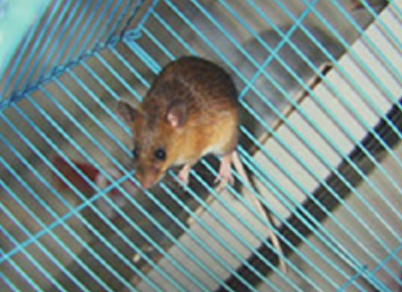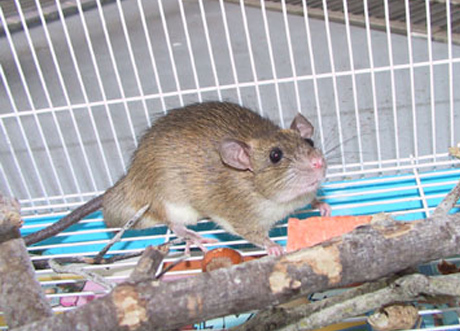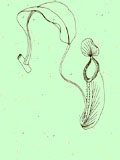
 |
Vertebrates (pdf)
Hong Kong’s common rat species
by Kylie Chung
There are two common rat species in Hong Kong – Niviventer fulvescens (Fig. 1) and Rattus sikkimensis (Fig. 2). N. fulvescens, which is also called the chestnut spiny rat, has unmistakable beautiful bright chestnut back fur interspersed with spines and a white belly. The bicolored tail with darker upper part is another characteristic of this species. The body is about 13 – 16 cm and the tail is usually 2 – 5 cm longer than the body. The other rat, R. sikkimensis is larger and looks more like a typical rat. It has greyish brown upperpart with long black guard hair and the underpart can vary from creamy white to pale greyish. Body length is about 17 – 22 cm and the tail can be a bit shorter though is usually about 2 - 4 cm longer. Its ears are comparatively smaller than those of N. fulvescens.
They are abundant and can be found in grassland, shrubland, woodland and forest. Both species are nocturnal and stay in their nests during daytime. Their nests were found underground or within big rock crevices by radio-tracking but some researchers have found that they can build nests in trees. Separation of nests of the two species was found to be smaller than 20 m showing they share the same territory.
Both species are omnivorous and eat different parts of plants, like fruits, seeds, leaves, grass and flowers; and invertebrates, like beetles and termites (Chandrasekar-Rao, 1994). Though seeds are not a major part of their diet, they are important seed predators. They usually only consume the fresh endosperm and leave the seed coat behind. However, intact small seeds, like Rhodomyrtus tomentosa and Melastoma sanguinium have been found in their faeces (Chandrasekar-Rao, 1994), indicating that they are potential small seed dispersers.
Bibliography
Chandrasekar-Rao, A. (1994) Distribution and ecology of Hong Kong small mammals, with special reference to seasonality. M.Phil Thesis, University of Hong Kong. 106pp.
 |
| Fig. 1. Niviventer fulvescens |
 |
| Fig. 2. Rattus sikkimensis |
|
|
P.11-12 |
|
Porcupine! |
 Copyright © 2000 |
